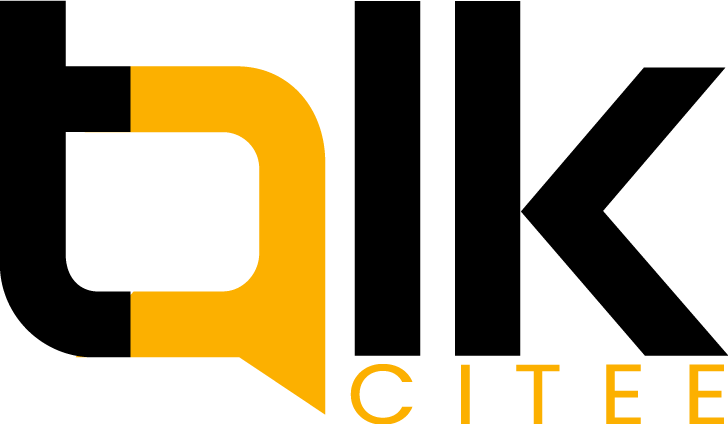
Overcoming the Intermediate Language Learning Plateau: A Guide for Success
Learning a second language feels like an adventure at first. You master basic phrases, conjugate verbs, and hold simple conversations. But then, progress stalls. You’re stuck at the intermediate level, unable to move forward. This is the intermediate language learning plateau, a common hurdle for learners. I faced this myself while learning Spanish. After breezing through beginner lessons, I hit a wall. Conversations felt repetitive, and complex grammar confused me. According to a 2018 study by the University of Cambridge, nearly 60% of language learners experience this plateau. It’s frustrating but normal. This blog post shares my journey and offers actionable tips to help you break through. With persistence and the right strategies, you can reignite your progress and reach fluency.
What Is the Intermediate Language Learning Plateau?
The intermediate plateau occurs when learners stagnate after mastering basic skills. You understand everyday conversations but struggle with nuanced expressions or advanced grammar. Vocabulary growth slows, and confidence wanes. Research from the American Council on the Teaching of Foreign Languages (ACTFL) shows intermediate learners often plateau because they rely on familiar patterns instead of pushing boundaries. For me, this meant sticking to simple Spanish sentences, avoiding subjunctive verbs. The plateau feels like running in place. You’re not regressing, but you’re not advancing either. Recognizing this stage is the first step. It’s a sign you’ve outgrown beginner methods and need new approaches to grow.

Why Does the Plateau Happen?
Several factors contribute to the intermediate plateau. First, the learning curve steepens. Beginner lessons focus on high-frequency words, but intermediate stages introduce complex structures. A 2020 study by the Language Learning Journal found that learners need 2,000–3,000 words for basic fluency, but advanced fluency requires over 8,000. Second, motivation dips. The initial excitement fades, and progress feels slower. Third, learners often lack exposure to authentic language. I noticed this when I stopped practicing Spanish outside class. Without real-world input, my skills stagnated. Finally, fear of mistakes holds learners back. You avoid risks to sound “correct,” limiting growth. Understanding these causes helps you tackle the plateau strategically.
Common Signs You’re Stuck
- You rely on the same phrases in conversations.
- Complex grammar, like conditionals, feels overwhelming.
- You understand native speakers but can’t respond fluently.
- Vocabulary growth feels stagnant despite studying.
- Motivation wanes, and studying feels like a chore.
Strategies to Break Through the Plateau
Overcoming the plateau requires intentional effort. Below are actionable strategies to reignite your progress. Each tip is practical and based on research or personal experience.
1. Immerse Yourself in Authentic Content
Immersion is key to advancing. A 2019 study by the Modern Language Association found that learners exposed to authentic materials—like movies, podcasts, or books—improve 30% faster than those using textbooks alone. Watch TV shows or listen to podcasts in your target language. I started watching Spanish telenovelas with subtitles. At first, I understood little, but gradually, I picked up slang and idioms. Choose content you enjoy to stay motivated. Apps like LingQ or websites like BBC Languages offer free resources. Dedicate 20–30 minutes daily to immersive activities. Over time, your ear adjusts, and your vocabulary expands naturally.
2. Practice Speaking with Native Speakers
Speaking with native speakers builds fluency and confidence. According to a 2021 study in the Journal of Second Language Acquisition, learners who practice speaking weekly improve 25% more than those who don’t. Platforms like iTalki or Tandem connect you with native speakers for affordable lessons or language exchanges. I partnered with a Mexican friend on Tandem, practicing Spanish for 30 minutes weekly. Initially, I stumbled, but she corrected me gently, boosting my skills. Don’t fear mistakes—they’re part of learning. Schedule regular conversations, even if brief, to gain confidence and learn natural expressions.
3. Expand Your Vocabulary Strategically
Vocabulary stagnation is a major plateau cause. Focus on high-utility words relevant to your interests. The ACTFL suggests learning 50–100 new words weekly for intermediate learners. Use spaced repetition apps like Anki to reinforce retention. I created flashcards for Spanish words related to travel, my passion. This made learning fun and relevant. Read articles or books slightly above your level to encounter new words in context. Write sentences using new vocabulary to solidify understanding. Consistent, targeted study helps you internalize words and use them confidently.
4. Master Complex Grammar
Grammar often intimidates intermediate learners. Tackle one structure at a time, like subjunctive or past perfect tenses. A 2022 study by Cambridge University Press found that focused grammar practice improves accuracy by 20%. Use resources like Duolingo or grammar books tailored to your language. I struggled with Spanish subjunctive verbs until I practiced with targeted exercises. Break grammar into small chunks, practice daily, and apply rules in writing or speaking. Over time, complex structures become intuitive, unlocking new ways to express yourself.
5. Set Specific, Achievable Goals
Clear goals maintain motivation. A 2020 study in Language Teaching Research found that goal-oriented learners progress 15% faster. Set SMART goals—specific, measurable, achievable, relevant, and time-bound. For example, “Learn 50 new Spanish words and hold a 10-minute conversation by next month.” I set a goal to read a short Spanish novel in three months. Breaking it into weekly chapters kept me focused. Track progress with a journal or app to stay accountable. Celebrate small wins to sustain momentum.

Breaking Through in Spanish
Two years ago, I hit the Spanish intermediate plateau. I could order food or chat about the weather, but deeper conversations eluded me. Frustrated, I nearly quit. Then, I joined a local Spanish meetup group. Speaking with native speakers exposed me to natural phrases and boosted my confidence. I also watched Spanish Netflix shows, jotting down new words. Within six months, I held longer conversations and understood complex grammar better. This taught me that persistence and varied practice are key. If I could break through, so can you.
Staying Motivated During the Plateau
Motivation is critical to overcoming the plateau. Remind yourself why you started learning. Visualize using your language skills—traveling, connecting with people, or advancing your career. A 2021 study by the University of Oxford found that learners with intrinsic motivation (personal fulfillment) persist 40% longer than those driven by external rewards. Join online communities like Reddit’s r/languagelearning for support. Reward yourself for milestones, like watching a movie without subtitles. I treated myself to a Spanish novel after completing a grammar course. These strategies keep you engaged and moving forward.
Common Mistakes to Avoid
Avoid these pitfalls to progress faster:
- Sticking to beginner materials: They’re too easy and limit growth.
- Avoiding mistakes: Errors are learning opportunities.
- Studying inconsistently: Daily practice, even 15 minutes, is crucial.
- Neglecting listening skills: Comprehension drives fluency.
- Overloading grammar: Focus on one rule at a time.
Conclusion
The intermediate language learning plateau is challenging but temporary. By immersing yourself in authentic content, speaking with native speakers, expanding vocabulary, mastering grammar, and setting goals, you can break through. My Spanish journey proves that persistence pays off. You’re not alone in this struggle, and with the right strategies, fluency is within reach. Start small, stay consistent, and celebrate progress. What’s your biggest language learning challenge? Share in the comments or spread this article to inspire others on their journey!
FAQs
Why do intermediate learners hit a plateau?
Intermediate learners plateau because the learning curve steepens, motivation dips, and exposure to authentic language is limited. Strategic practice helps.
How long does the intermediate plateau last?
The plateau varies but can last months to a year. Consistent practice with immersive methods can shorten this period significantly.
Can immersion really help break the plateau?
Yes, immersion in authentic content like movies or podcasts improves comprehension and vocabulary, as shown in a 2019 Modern Language Association study.
How often should I practice speaking?
Weekly speaking practice with native speakers, even for 20–30 minutes, boosts fluency, according to a 2021 study in Second Language Acquisition.
What’s the best way to learn new vocabulary?
Use spaced repetition apps like Anki, focus on relevant words, and practice in context to retain and apply vocabulary effectively.





